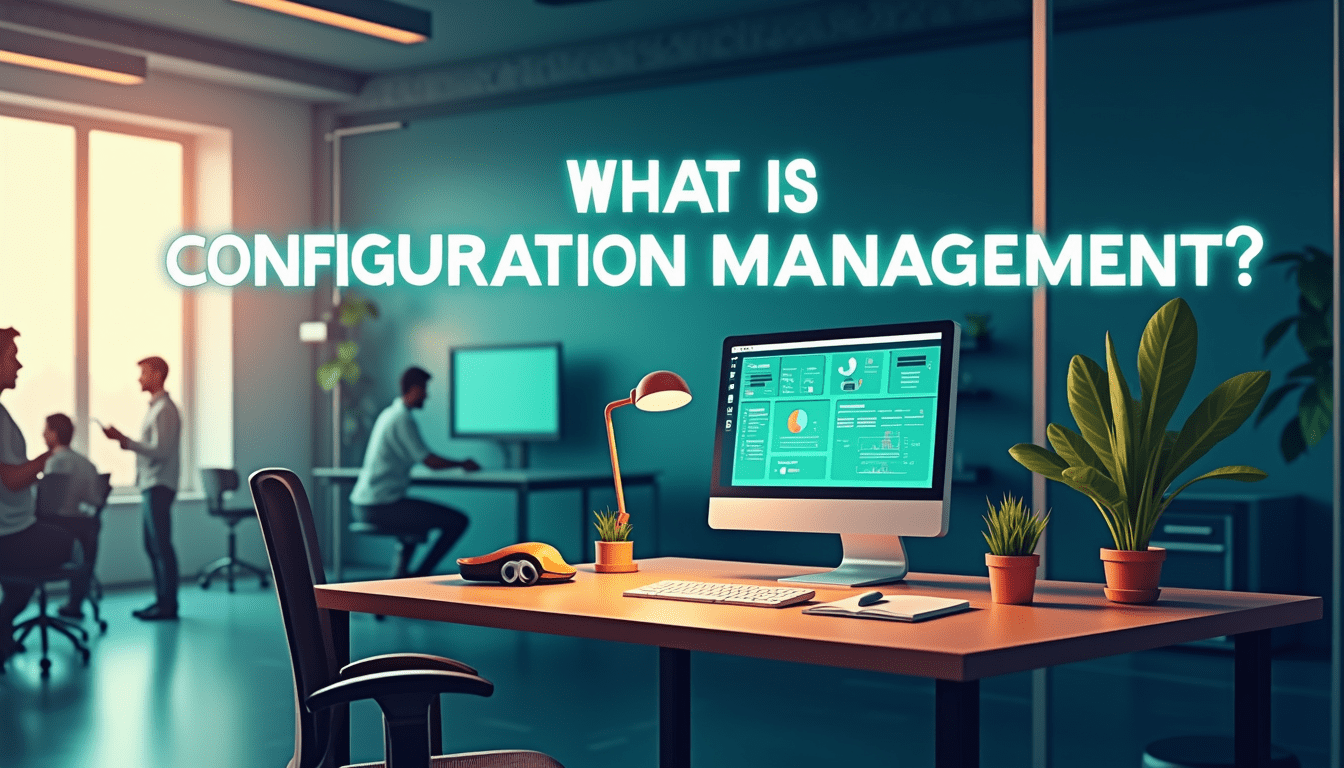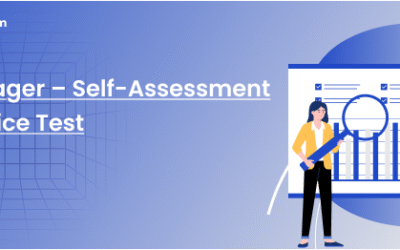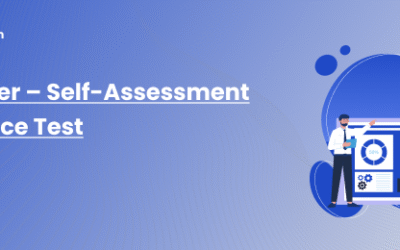What is Configuration Management
Configuration management is a critical aspect of any organization’s IT infrastructure, ensuring that all systems and devices are properly set up and maintained. But what exactly is configuration management? In simple terms, it refers to the process of tracking and controlling changes to hardware, software, and network configurations. By implementing efficient configuration management protocols, businesses can achieve seamless operations, enhance productivity, and reduce the risk of errors or security breaches.
Effective configuration management involves various elements, such as identifying and documenting each component within the system, establishing baselines, and implementing change control procedures. It enables organizations to keep track of all modifications made to their IT assets, ensuring that the configurations are consistently up to date and properly functioning.
Furthermore, configuration management plays a pivotal role in ensuring compliance with industry standards and regulations. By effectively managing and documenting configurations, businesses can provide auditors with accurate and detailed information, demonstrating their adherence to specific requirements.
In conclusion, configuration management is a crucial practice that enables organizations to maintain control over their IT assets, ensuring optimal performance, security, and compliance. By implementing effective configuration management strategies, businesses can enhance operational efficiency and reduce the risk of disruptions in their IT infrastructure.
Why is Configuration Management Important?
Configuration management is often the unsung hero of IT operations, quietly working behind the scenes to ensure that systems are stable and reliable. The importance of configuration management can hardly be overstated, as it directly impacts both the operational integrity and strategic capabilities of an enterprise.
Firstly, configuration management provides a detailed inventory of all IT assets, which is essential for effective asset management and strategic planning. Knowing what assets are in play and their configurations helps decision-makers allocate resources more efficiently and plan for future investments.
Secondly, it is instrumental in risk management. By keeping a close eye on system configurations, organizations can quickly identify and mitigate potential security vulnerabilities. This proactive approach is invaluable in an era where cyber threats are evolving and becoming increasingly sophisticated.
Lastly, maintaining consistency across the IT environment reduces errors and downtime. This ensures that the organization can provide a high level of service continuity, which is critical for maintaining customer trust and satisfaction.
Key Principles of Configuration Management
Core principles underpin the practice of configuration management, ensuring that it delivers the intended benefits effectively. Understanding these principles is key to implementing a robust configuration management system.
Identification is the first principle, which involves cataloguing all configuration items (CIs). This not only includes hardware and software components but also relevant documentation and other resources that contribute to the delivery of IT services.
Control is another central principle, which means that any changes to CIs are made in a controlled and coordinated manner. This helps prevent unauthorized alterations that could potentially lead to system instability or security breaches.
Status accounting follows, which is the process of recording and reporting the lifecycle of each CI. This includes the history of changes made, the current status, and any planned changes. This comprehensive overview is critical for managing the IT environment effectively.
Finally, verification and audit ensure that the CIs and their recorded information match reality. Regular audits confirm that the configuration management system accurately reflects the IT landscape, which is essential for effective management and compliance.
Configuration Management Process
The configuration management process is a systematic approach that ensures all changes to the IT infrastructure are made in a coordinated, consistent, and safe manner.
The first step in the process is configuration identification, where all items that will be managed are defined and labelled. This sets the stage for subsequent steps by establishing what the configuration management system will cover.
Configuration control follows, which involves the evaluation, coordination, approval, or rejection of changes. This step is critical for maintaining integrity and stability within the IT environment.
Next is configuration status accounting, where information about CIs and their changes are recorded and maintained. This step ensures that anyone involved in managing the IT infrastructure has access to up-to-date, accurate information.
Finally, configuration verification and audit involve regular checks to ensure the configuration management system is functioning correctly and that CIs are in their documented state. This step helps identify any discrepancies and rectify them promptly.
Tools and Technologies for Configuration Management
A range of tools and technologies are available to aid in the implementation and operation of configuration management systems. These tools are designed to automate many aspects of the process, enhancing accuracy and efficiency.
Version control systems are foundational tools that track changes to files over time. They are particularly useful for managing software code and can be used to roll back to previous versions if necessary.
Automation tools take the heavy lifting out of deploying and managing configurations across a large number of systems. They can apply configurations consistently, enforce policies, and even self-heal systems by reverting to known good states.
Monitoring tools are also important, as they provide real-time insights into the IT environment. They can trigger alerts when configurations drift from their defined states, allowing for quick intervention and correction.
Lastly, database management tools help maintain configuration data, ensuring that records are consistent, well-organized, and easily accessible for reporting and auditing purposes.
Configuration Management Best Practices
Best practices in configuration management are guidelines that have been developed through industry consensus and are designed to achieve optimal results.
The first best practice is to maintain detailed documentation. This includes not only technical specifications but also the rationale behind configuration choices, which can be critical for troubleshooting and future decision-making.
Regularly reviewing and updating the configuration management plan is another best practice. As the IT environment and business needs evolve, so too should the configuration management process to remain effective.
Stakeholder engagement is vital for ensuring that the configuration management process is aligned with business objectives and that all relevant parties understand their roles and responsibilities.
Lastly, continuous improvement should be a guiding principle. By regularly evaluating the effectiveness of configuration management activities and incorporating feedback, organizations can refine their processes and achieve better outcomes over time.
Challenges in Implementing Configuration Management
Despite its importance, implementing configuration management can present challenges. One of the most common challenges is resistance to change within the organization.
Staff members may be accustomed to certain ways of doing things, and introducing new processes can disrupt their workflow. It’s important to manage this change carefully, ensuring that everyone understands the benefits and is trained appropriately.
Another challenge is the complexity of modern IT environments. With the proliferation of cloud services, mobile devices, and IoT, keeping track of all configuration items can be daunting. Robust tools and a clear strategy are essential for managing this complexity.
Data quality is also a hurdle. Inaccurate or outdated information can lead to poor decision-making and operational failures. Ensuring that configuration data is accurate and up-to-date is a constant requirement for effective configuration management.
Lastly, integrating configuration management with other IT processes can be complex but is necessary for a holistic approach to IT management. This requires careful planning and coordination to ensure that all processes complement each other.
Configuration Management in Different Industries
Configuration management principles are universally applicable, but their implementation can vary widely across different industries due to specific regulatory and operational requirements.
In the finance sector, for instance, configuration management must align with strict compliance standards related to data security and privacy. Financial institutions must ensure their systems are not only efficient but also secure against data breaches.
The healthcare industry faces similar challenges, with the added complexity of managing configurations for a variety of medical devices and software that must meet rigorous health and safety standards.
In manufacturing, configuration management is critical for maintaining production line machinery and ensuring that changes to system configurations do not disrupt production schedules or compromise product quality.
Each industry must tailor its configuration management practices to its unique environment while adhering to the core principles that ensure effective and efficient IT operations.
Configuration Management vs Change Management
While configuration management and change management are closely related, they are distinct disciplines within IT management.
Configuration management focuses on the detailed recording and updating of information about an organization’s IT assets and their configurations. Change management, on the other hand, deals with the processes for making changes to the IT environment, assessing the impact of these changes, and managing the change lifecycle.
It’s important to recognize that configuration management and change management are complementary. Effective change management relies on accurate configuration data to assess the potential impacts of changes, while configuration management benefits from the structured approach to change that change management provides.
Together, these disciplines ensure that IT environments are not only accurately documented and controlled but also that they can evolve in a controlled and predictable manner to meet the changing needs of the business.
Conclusion
Configuration management is an essential component of modern IT management. It ensures that organizations can keep pace with the rapid changes and complexities of their IT environments while maintaining control and compliance.
Implementing configuration management requires careful planning, the right tools, and adherence to best practices. Even though there are challenges, the benefits of improved operational stability, security, and compliance are substantial.
By understanding the difference between configuration management and change management, organizations can ensure that these two disciplines work in harmony to support strategic objectives and day-to-day operations.
In summary, configuration management is not just about maintaining lists or databases of IT assets; it’s about ensuring that every component of the IT infrastructure is functioning optimally and is ready to support the business now and in the future.




